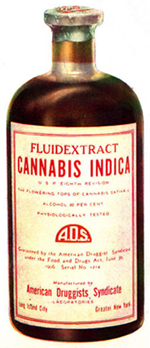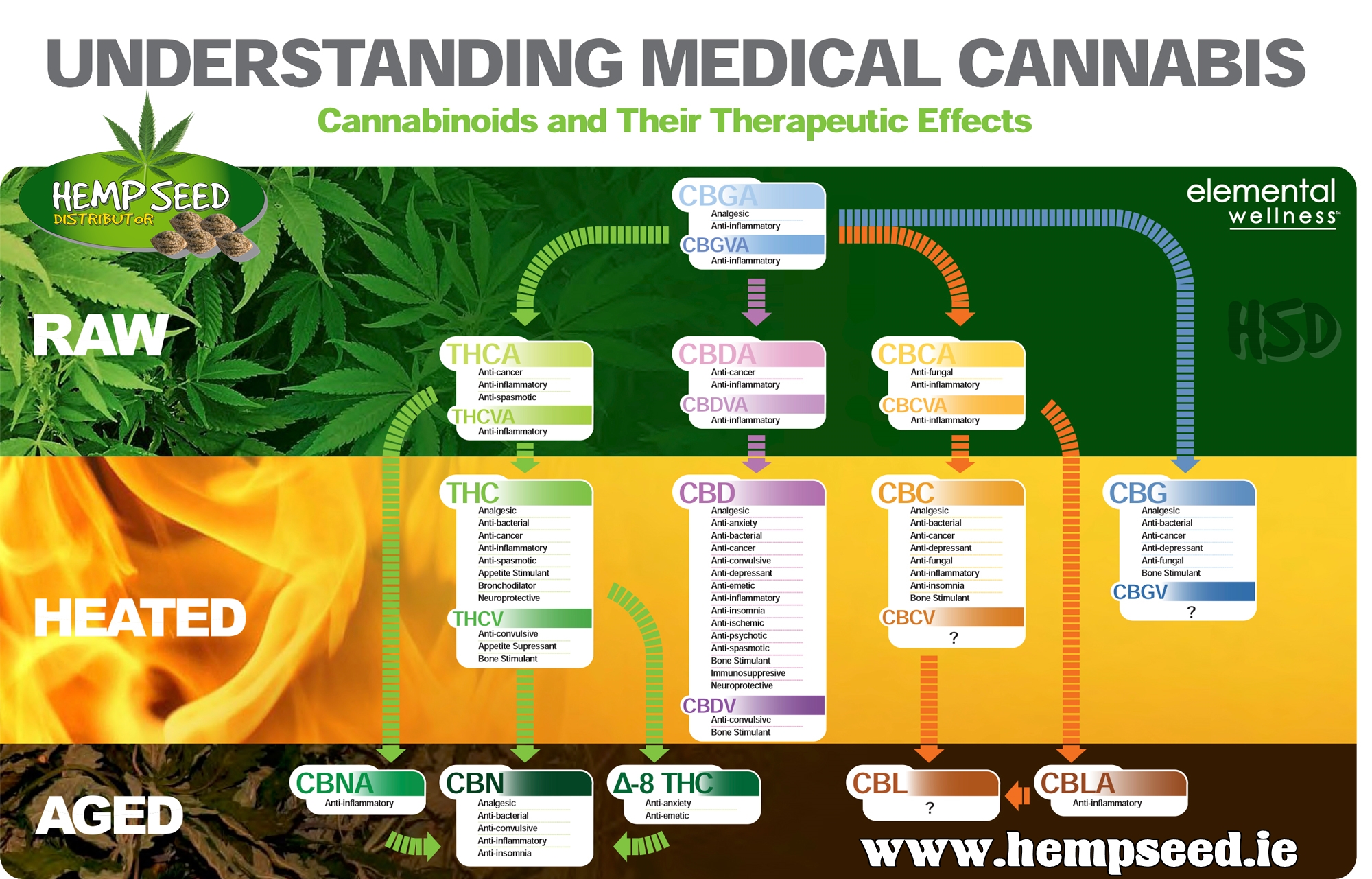Medical uses of Cannabis
The medical uses of
Cannabis and its components compounds. NOTE: Links to sources were
working when this page was published. Due to the nature of the
Internet, links may have changed.
Medical Cannabis and It's Uses
Background
Medical cannabis refers to the parts of the herb Cannabis indica or Cannabis sativa used as a doctor-recommended or
prescribed form of medicine. The Cannabis plant has a long history of use as medicine, with some evidence dating back
to the Chinese Emperor Shen Nung (神农) in 2737 BCE. The oldest Chinese pharmacopeia, (around 100 CE), the
Shennong Bencaojing (神農本草經), describes "dama" cannabis. Cannabis is one of the 50
"fundamental" herbs of traditional Chinese medicine, and is prescribed for a wide variety of treatments. The Chinese
also used Cannabis for anaesthetics. The Chinese term for anaesthesia (麻醉 - ma zui) is composed
of the ideogram meaning hemp (Cannabis), followed by the character for means of intoxication.
Ancient Egyptian papyri (scrolls) mention medical cannabis. The ancient Egyptians used hemp (cannabis) in suppositories
for relieving the pain of haemorrhoids. Around 2,000 BCE., the ancient Egyptians even used cannabis to treat sore eyes.
|
 |

|
Texts from ancient India show that cannabis' psychoactive properties were recognized, and doctors have used it for treating a variety
of illnesses and ailments. These included insomnia, headaches, a whole list of gastrointestinal disorders, and pain (cannabis was
frequently used to relieve the pain of childbirth).
Cannabis as a medicine became common throughout much of the Western world by the 19th century. It was used as the primary pain
reliever until the invention of aspirin.
An Irish Doctor, William Brooke O'Shaughnessy, introduced the therapeutic use of
cannabis to Western medicine. He was Assistant-Surgeon and Professor of Chemistry at the Medical College of Calcutta, and
conducted cannabis experiments in the 1830s, first testing his preparations on animals, then administering them to
patients to help treat muscle spasms, stomach cramps or general pain. Even Queen Victoria of England used
Cannabis for the relief of her menstrual cramps.
|
|
Legal Issues
Cultivating medicinal cannabis is illegal in most countries, however there are many places where growers are
legally licensed. A number of governments, allow patients to be treated with Cannabis for various disorders. However, public
opinion around the world is changing in favour of the use of medical cannabis, especially for chronically ill patients who
do not get relief from their symptoms when other medication is not working.
Many countries now allow varying levels of decriminalization for medicinal (and some even for recreational) usage, including
Austria, Canada, Czech Republic, Finland, Germany, Italy, Israel, the Netherlands, Portugal, Spain, Switzerland and a number
of states in the USA. Ecuador and Canada have have legalized it nationally for recreational adult as well as medical use.
Cannabis is non-toxic, and there have been zero reported fatalities or overdoses of people consuming Cannabis.
As more people become aware of the healing qualities of
Cannabis through TV and other media, there is more and more
demand for this natural medicine that has virtually no side
effects.
|
 |
|
Beneficial Medicinal Effects
Studies have shown cannabis has several well-documented beneficial medical effects. Among these: the reduction of nausea and vomiting
for chemotherapy (cancer) patients, stimulation of appetite in AIDS patients and for some eating disorders, lowered internal eye
pressure (for treating glaucoma), as well as treatment for some gastrointestinal illness and arthritis pain relief. In a recent
report, the National Cancer Institute (NCI) of the US stated that Cannabis has been shown to slow or stop the growth of certain
lung cancer cells and also suggested that Cannabis may provide "risk reduction and treatment of colorectal cancer". The most
common method of consuming medical Cannabis is vaporizing or smoking dried buds, drinking Cannabis infused tea or other
beverages, eating extracts, using Cannabis butter, Cannabis ointment or cream, and taking capsules.
The Medicinal Components of Cannabis
The chart below shows the active medicinal components in the Cannabis plant and how they affect the human body.
|

|
Diseases and Disorders Treated by Cannabis
This chart shows a list of various diseases and disorders which can be treated with Cannabis, as well as the biological
active components in the Cannabis plant that provides the most effective treatment.
The graphic below shows more information on the therapeutic
effects of various Cannabis components. |


Click on the Image, to See Full Size Version - Opens in a new tab
(image courtesy of www.hempseed.ie)
|
|
Sources:
Medical cannabis -
http://en.wikipedia.org/wiki/Medical_cannabis
Aggarwal SK, Carter GT, Sullivan MD, ZumBrunnen C, Morrill R, Mayer JD (2009). "Medicinal use of cannabis in the United
States: historical perspectives, current trends, and future directions"
"IACM 5th Conference on Cannabinoids in Medicine" (PDF). International Association for Cannabis as Medicine.
Joy, Janet E.; Watson, Stanley J.; Benson, John A., eds. (1999). Marijuana and Medicine: Assessing the Science Base.
Washington, D.C.: National Academies Press. ISBN 978-0-309-07155-0. OCLC 246585475.
"Workshop on the Medical Utility of Marijuana". National Institutes of Health.
Federal Government Reports Marijuana Effective in Combating Certain Cancers Reports ADSI -
http://www.nbcnews.com/id/51148243/ns/business-press_releases/t/federal-government-reports-marijuana-effective-combatting-certain-cancers-reports-adsi/#.UXyB_EoaSBD
|



